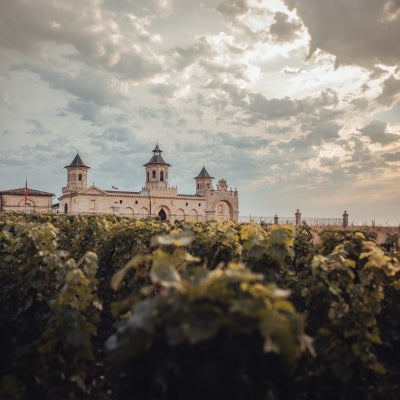
Discover Saint-Estèphe in six wines
Saint-Estèphe is a distinguished wine-producing region on Bordeaux’s Left Bank. The northernmost appellation of the Médoc, it is celebrated for its robust, tannic, and complex Cabernet Sauvignon dominant red blends. The unique terroir, marked by gravelly soils and a temperate oceanic climate, crafts wines with remarkable structure and aging potential, making Saint-Estèphe a favorite among enthusiasts seeking depth and elegance.
Fast facts
Name: In the Gallo-Roman period the area was known as “Calones”, derived from "calon" – a flat-bottomed boat used to traverse the Gironde River. It later became Saint-Estèphe de Calones and was eventually shortened to Saint-Estèphe. Yet, the legacy of "calon" persists, notably influencing the Ségur family with Château Calon-Ségur.
Location: Situated in the Left Bank of Bordeaux, Saint-Estèphe enjoys a prime position that benefits from both the moderating influence of the Gironde estuary and the area's diverse soils.
Climate and Soil: The appellation boasts a mix of gravel, clay, and limestone soils, contributing to the powerful yet refined character of its wines. The climate is predominantly maritime, providing mild winters and warm summers.
Grapes: Dominated by Cabernet Sauvignon and Merlot, with touches of Cabernet Franc and Petit Verdot, the wines of Saint-Estèphe are renowned for their robust structure and longevity.
Indulge in the wines:
Cos d'Estournel symbolizes the blend between modernity and history with its architecturally splendid winery and the exotic flair of its founder, Louis-Gaspard d'Estournel. With a commanding presence, Cos d'Estournel's wines exhibit a majestic balance of intensity and elegance, characterized by rich dark fruit, spicy undertones, and an impeccable structure destined for long aging.
Heart and soul encapsulate the essence of Calon Ségur, with its heart-shaped emblem signifying the profound love for the vineyard and wines. Historically regarded as one of the oldest estates in Saint-Estèphe, its wines reflect a dedication to quality and a deep connection to the land. The signature style is one of depth and charm, offering a nuanced blend of dark berries, violet, and minerality, with a graceful aging potential that captivates collectors and connoisseurs alike.
Under the stewardship of the Tesseron family, Lafon-Rochet has undergone a renaissance, melding cutting-edge technology with sustainable viticulture to express the best of its terroir. The château's distinctive yellow facade mirrors the brightness and vivacity of its wines. Distinguished by their refined structure and complexity, Lafon-Rochet's offerings are a testament to the harmony between human touch and nature, showcasing layers of fruit, spice, and an elegant tannic backbone.
Montrose, a titan among the vineyards of Saint-Estèphe, is famed for producing wines of monumental structure and longevity. The estate’s rigorous commitment to precision and excellence is reflected in its wines, which are often described as the epitome of Saint-Estèphe’s power and refinement. Montrose’s wines command attention with their concentrated fruit, earthy notes, and formidable tannins, promising a journey of discovery over decades.
Phélan Ségur, known for its approachable yet sophisticated style, offers a window into the soul of Saint-Estèphe. The château, with its rich history and commitment to quality, crafts wines that blend power with elegance. Offering a palette of ripe berries, cedar, and spice, these wines are accessible in youth yet possess the backbone to age gracefully, epitomizing the charming duality of Saint-Estèphe.
The essence of authenticity and charm, Ormes de Pez is a treasure within Saint-Estèphe, offering wines that capture the heart with their rustic elegance and vibrant character. Owned by the Cazes family, the estate emphasizes traditional winemaking practices to produce wines that are both expressive and balanced. With a focus on fruit purity and seamless integration of oak, Ormes de Pez's wines are a harmonious blend of strength and subtlety, embodying the spirit of Saint-Estèphe.
Want to read more? Take a look at some of our other blogs here:



